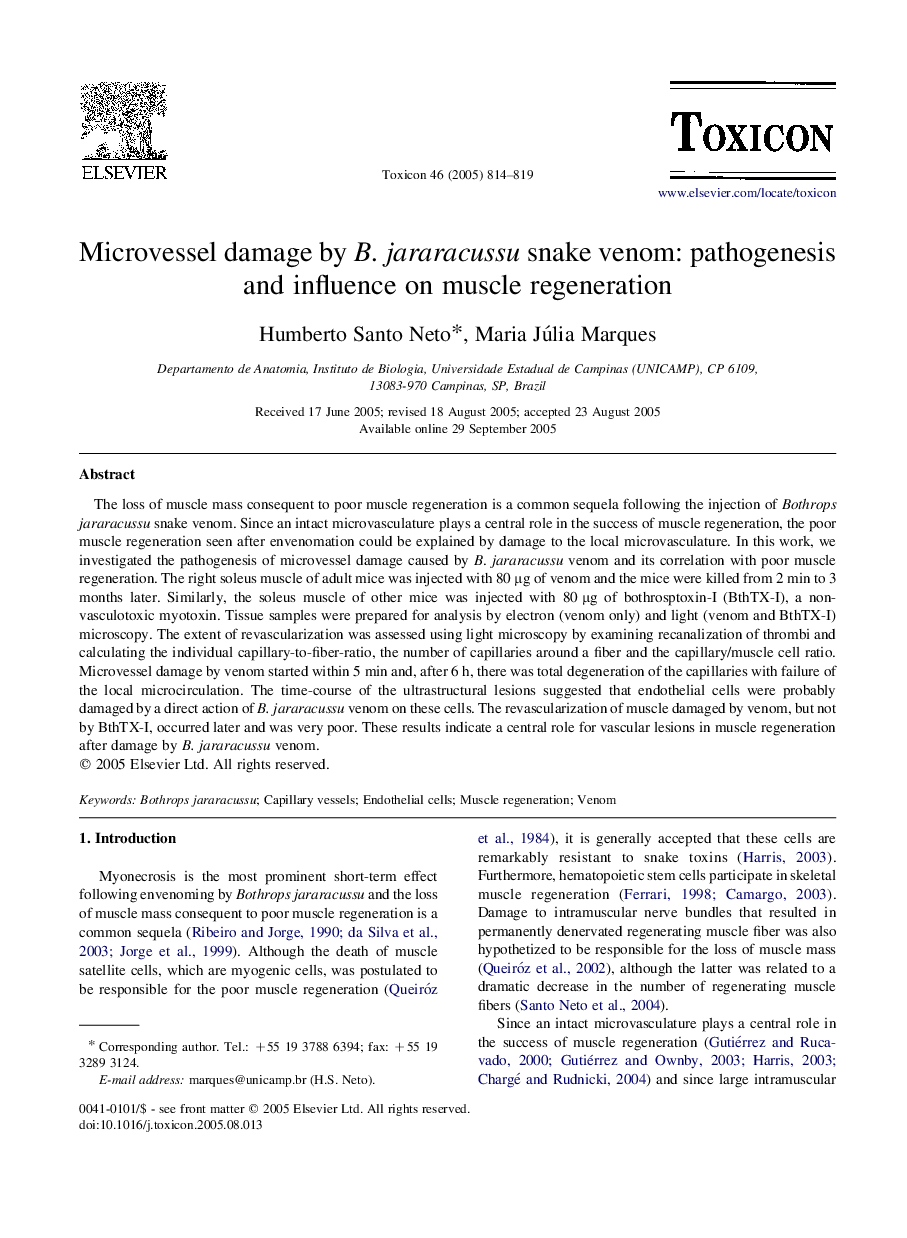| Article ID | Journal | Published Year | Pages | File Type |
|---|---|---|---|---|
| 10880316 | Toxicon | 2005 | 6 Pages |
Abstract
The loss of muscle mass consequent to poor muscle regeneration is a common sequela following the injection of Bothrops jararacussu snake venom. Since an intact microvasculature plays a central role in the success of muscle regeneration, the poor muscle regeneration seen after envenomation could be explained by damage to the local microvasculature. In this work, we investigated the pathogenesis of microvessel damage caused by B. jararacussu venom and its correlation with poor muscle regeneration. The right soleus muscle of adult mice was injected with 80 μg of venom and the mice were killed from 2 min to 3 months later. Similarly, the soleus muscle of other mice was injected with 80 μg of bothrosptoxin-I (BthTX-I), a non-vasculotoxic myotoxin. Tissue samples were prepared for analysis by electron (venom only) and light (venom and BthTX-I) microscopy. The extent of revascularization was assessed using light microscopy by examining recanalization of thrombi and calculating the individual capillary-to-fiber-ratio, the number of capillaries around a fiber and the capillary/muscle cell ratio. Microvessel damage by venom started within 5 min and, after 6 h, there was total degeneration of the capillaries with failure of the local microcirculation. The time-course of the ultrastructural lesions suggested that endothelial cells were probably damaged by a direct action of B. jararacussu venom on these cells. The revascularization of muscle damaged by venom, but not by BthTX-I, occurred later and was very poor. These results indicate a central role for vascular lesions in muscle regeneration after damage by B. jararacussu venom.
Related Topics
Life Sciences
Biochemistry, Genetics and Molecular Biology
Biochemistry, Genetics and Molecular Biology (General)
Authors
Humberto Santo Neto, Maria Júlia Marques,
